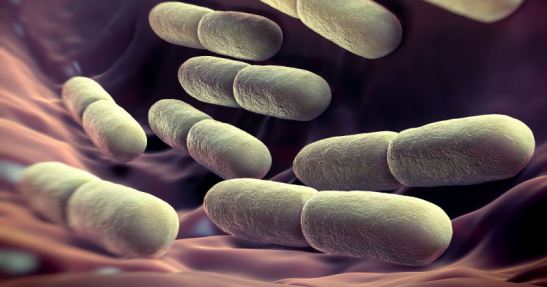A new genetic analysis of human gut bacteria is turning up some really weird critters—so weird, in fact, that some biologists are speculating we’ve found an entirely new domain of life. … here’s why it’s even being discussed:
In the past ten years, new genomic technologies have, for the first time, enabled scientists to explore our microbiome—that trove of invisible critters that live on us and in us. Microbiome research is quite literally rewriting the textbooks on human biology, as we learn that everything from our mouths to our intestines to our skin is, in fact a complex and diverse ecosystem. Hell, we’re even surrounded in a personal cloud of bacteria. By some estimates, the human cells in your body are vastly outnumbered by microbes.
Now that we’ve come to appreciate just how ubiquitous our microbial tenants are, we’re starting to drill deeper and learn their identities. And that’s led to some surprises. For one, a lot of the bugs living in our gut are totally distinct from anything we’ve encountered before.
This week, New Scientist reports on a study conducted by Philippe Lopez and Eric Bapteste at the Pierre and Marie Curie University in Paris. Lopez, Bapteste and other collaborators have come up with a new method for identifying the most distinct life forms in the gut microbiome: Studying 86 gene families that are rarely swapped between organisms. (Many genes are passed back and forth between distantly related microbes via a process known as “horizontal transfer.”) Genes that “don’t get around much” can in theory be used to parse out the three known domains of life: Bacteria, Archaea, and Eukaryotes.
Here’s that analysis has found so far:
“They analysed microbiome samples, recovering about 230,000 DNA sequences that are related to known sequences in those 86 gene families. They then used these sequences as the starting point for a second analysis – a little like digging deeper into your ancestry by using your parents’ DNA rather than your own to guide the search. This revealed an additional 80,000 stretches of microbial DNA that belonged in the 86 gene families. But the sequence of bases was highly unusual in about one-third of the DNA – it shared just 60 per cent or less of its identity with any known gene sequences. That degree of difference is what you might expect to separate different domains of life, such as bacteria and archaea.”
So, about one third of all the marker genes Lopez and Bapteste looked at don’t match one of life’s known domains. Does that mean we’ve discovered a fourth domain, living right under (inside?) our noses? Maybe! But it could mean a lot of other things too. For one, these particular genetic markers could simply be more variable than we realized. After all, we’ve still got a very poor handle on the genetic diversity of the microbial world. It’s possible that in an isolated environment like the human gut, natural selection has resulted in a level of genetic variation—just within the three domains of life—that we haven’t seen elsewhere.
To really answer the question of whether we’re looking at a totally new branch on the evolutionary tree, we’ll need to isolate and study the organisms producing these weird genes. That won’t be an easy task, given that the vast majority of microbes still can’t be cultured in the laboratory.
But the possibility of a fourth domain is compelling enough that we’re sure as hell going to try.
Via gizmodo http://news360.com/article/321848215
More gut bacteria diversity is associated with less colon cancer and one way to increase this is exercise.
See http://www.livescience.com/41767-colon-cancer-gut-bacteria-diversity.html and http://www.medicalnewstoday.com/articles/277960.php ![]()








